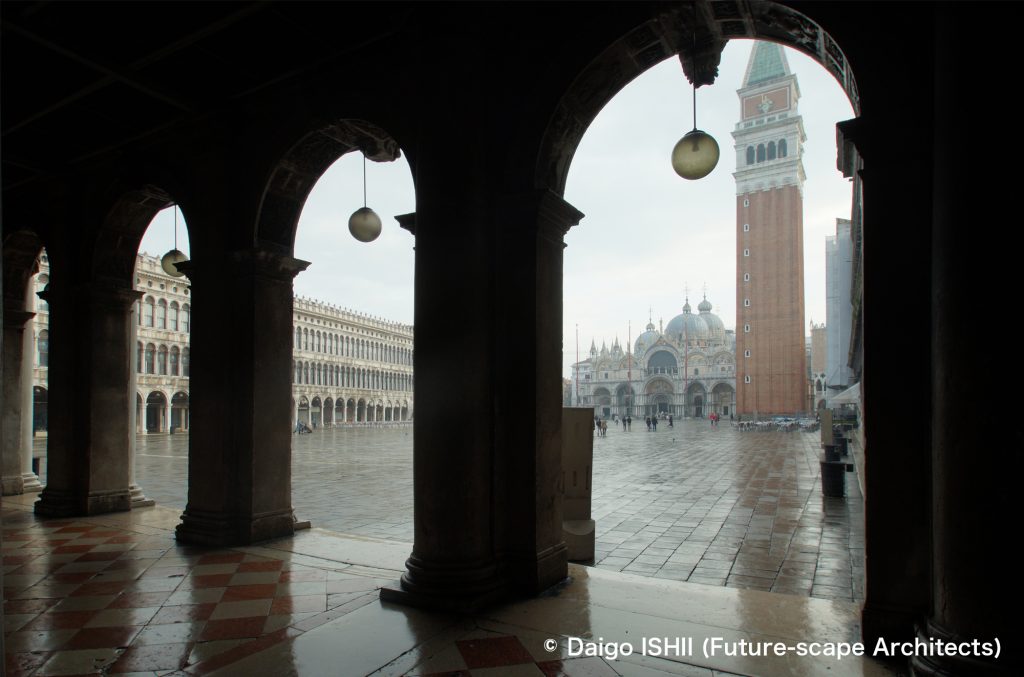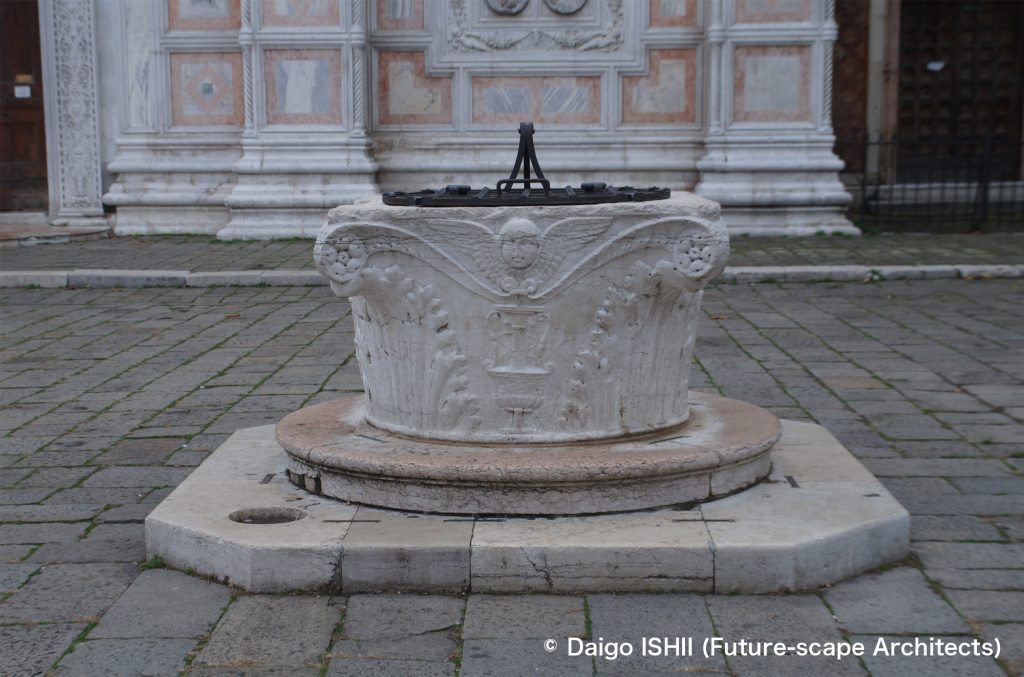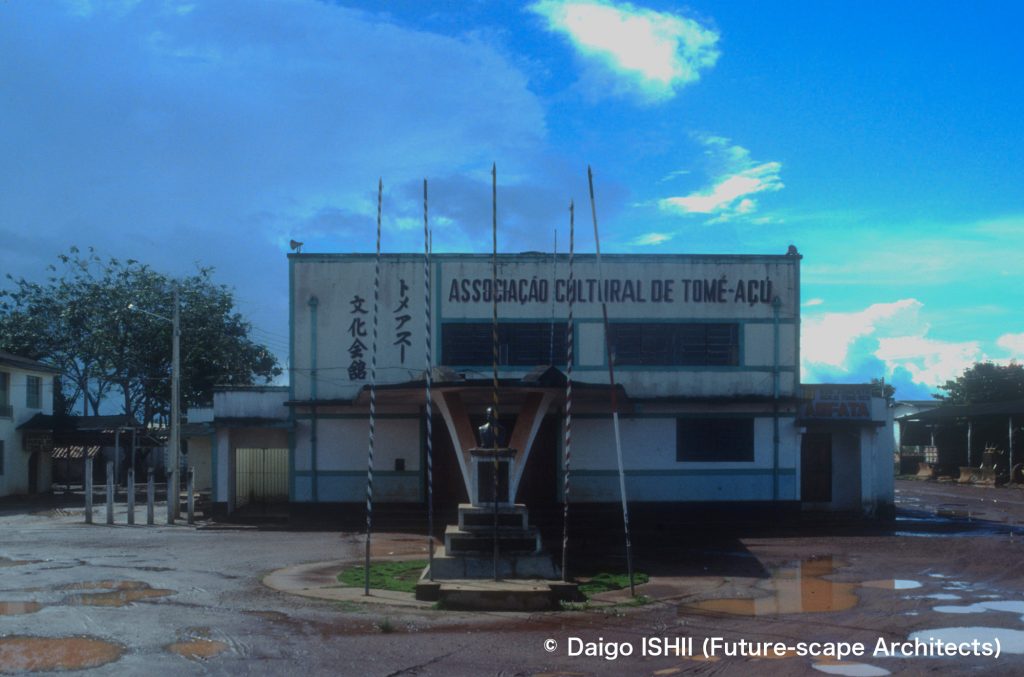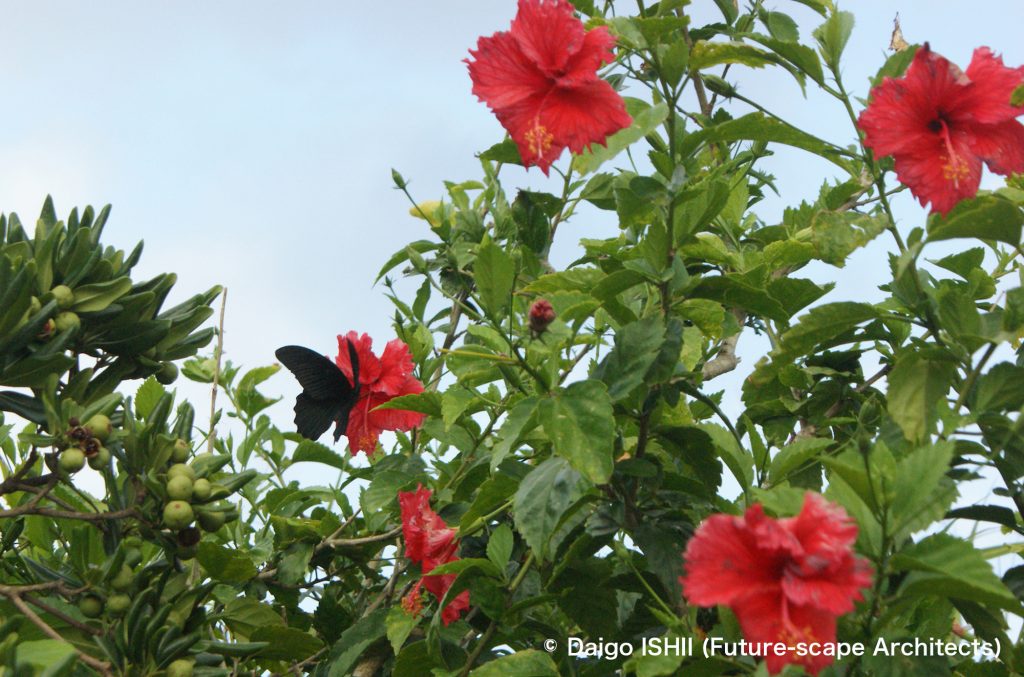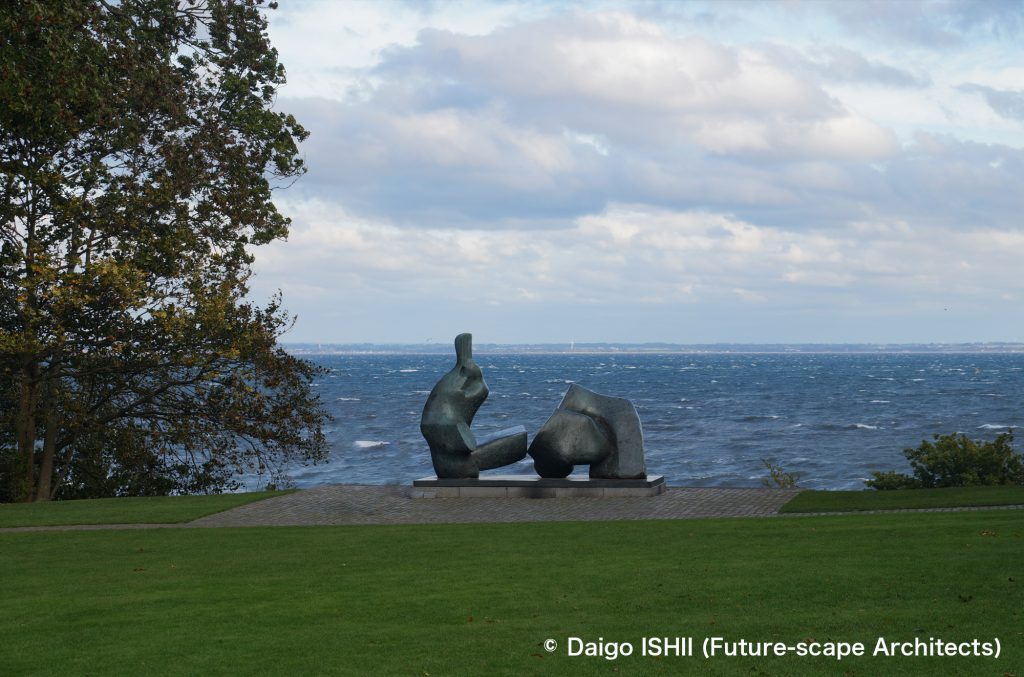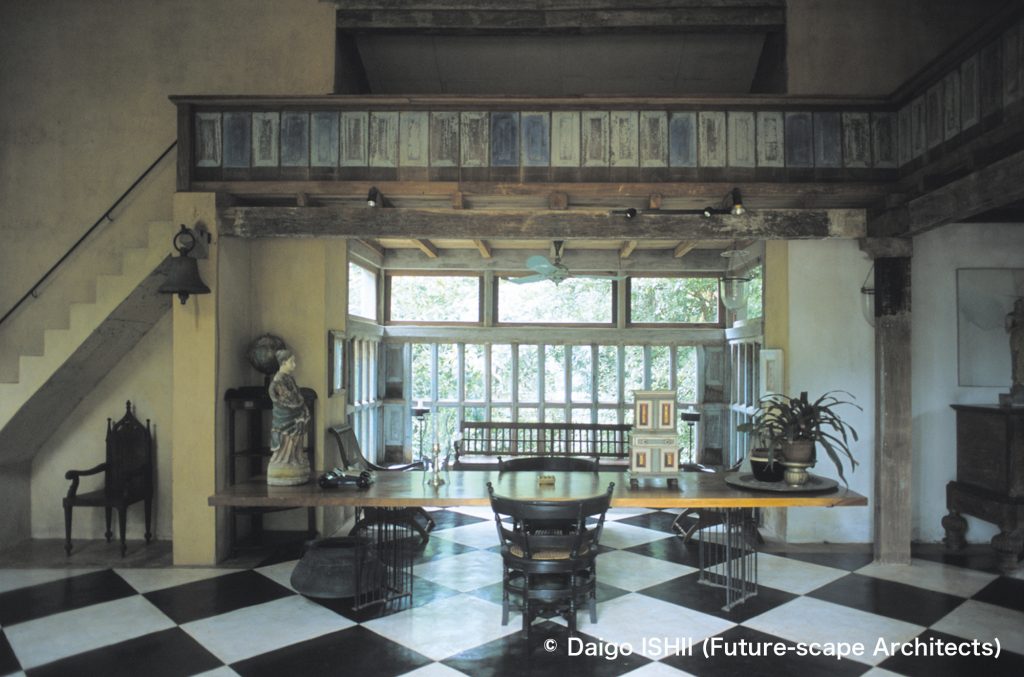社会体制まで含めると、ルネサンスが人間的かどうか懐疑的ですが、ベネツィアで人間的な視点をいちばん感じた場所が、1499年につくられた、ベネチアルネサンスを代表するコンタリーニ・デル・ボーボロ階段。
I'm skeptical about whether the Renaissance including the social system was human, but the place where I felt the most human comfort in Venezia was the Contarini del Bovolo staircase built in 1499 that represents the Renaissance architecture in Venezia.

Look up the Contarini del Bovolo staircase.
コンタリーニ・デル・ボーボロ階段は、同名の宮殿に取り付いた螺旋階段で、当時は、こういう屋外階段を屋敷に設けるのは、ベネチアでは一般的だったそうです。
木製ドームの展望台を除けば、アーチと柱、手摺が繰り返されているだけに見えますが、実は、アーチの高さは、第1層に対して、最上層が半分の高さ。実際以上に高さがあるように見せる視覚効果です。その効果で、円柱がほっそりと感じられ、さらに、第1層の角柱が、下部をかすかにどっしりとさせるので、円柱の軽さが強調され、高さをいっそう感じます。単純に見えて、実は、軽く高く見えるように、視覚的に巧妙にコントロールした優雅さ。そういう風に、人間の視点を介入させたところが、ルネサンスの真髄かもしれません。
骨格はイストリア産の白いライムストーンで、その間を煉瓦で埋めています。ヴェネツィアのルネサンス建築でしばしば見掛ける白や色鮮やかな大理石に比べれば地味な素材使い。その質素さに、逆に、華やかな他のルネサンス建築では隠れていた特質が浮かび上がります。
螺旋階段は、上りやすく、疲れを感じさせず、あっと言う間に気持ちよく、28mの高さにある展望台に到着。機能に配慮した階段のつくりもまた、ルネサンスの人間観の体現に思えました。最上層の階段の幅は1.65m、蹴上は17cm、1段あたりの角度は18度でした。
The spiral Contarini del Bovolo staircase was attached to the palace of the same name. At that time, it was common to have such outdoor staircase in a Venetian palace.
Except for the observatory with the wooden dome, its architecture seemed to be the repetition of arches, pillars, and handrails. In reality, the height of the arch of the top layer was half the height of the 1st layer arch. Its visual effect made the staircase look taller than it was. According to that, the circular pillar looked more slender. The lower part, which was made solid with prismatic pillar on the 1st layer, emphasized the lightness of the circular pillar and the height of the architecture further. It looked simple, but, a well-controlled architectural way to pretend lighter and higher on the human eye realized its elegance. That kind of intervention of the human perspective is the essence of the Renaissance.
The skeleton material is a white limestone from Istria. Between the limestone, bricks fill in. Compared to white and colorful marble often seen in the Renaissance architectures in Venezia, the way of this stairacase is modest. The simplicity emerges the character that had hidden behind other ornate Renaissance architectures.
The spiral staircase is so easy to climb that I didn't feel tired. In an instant, I arrived at the observatory at 28m high. The staircase design that considered to function also seemed to embody the Renaissance human view. The width of the top stairs was 1.65 m, the rise was 17 cm, and the angle per step was 18 degrees.
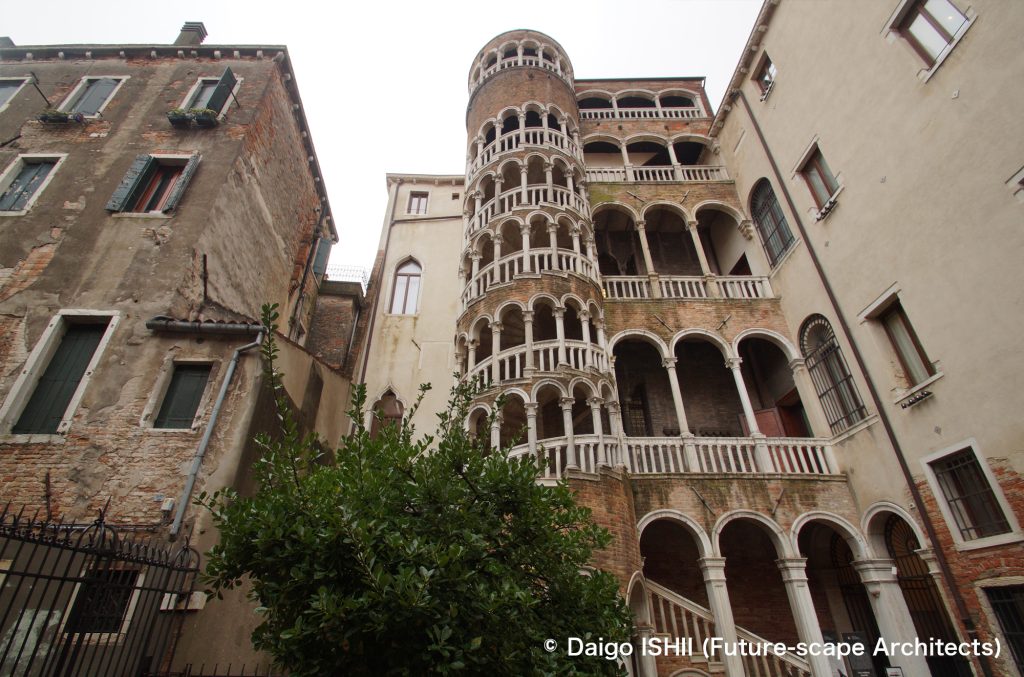
Look up the Contarini del Bovolo staircase.
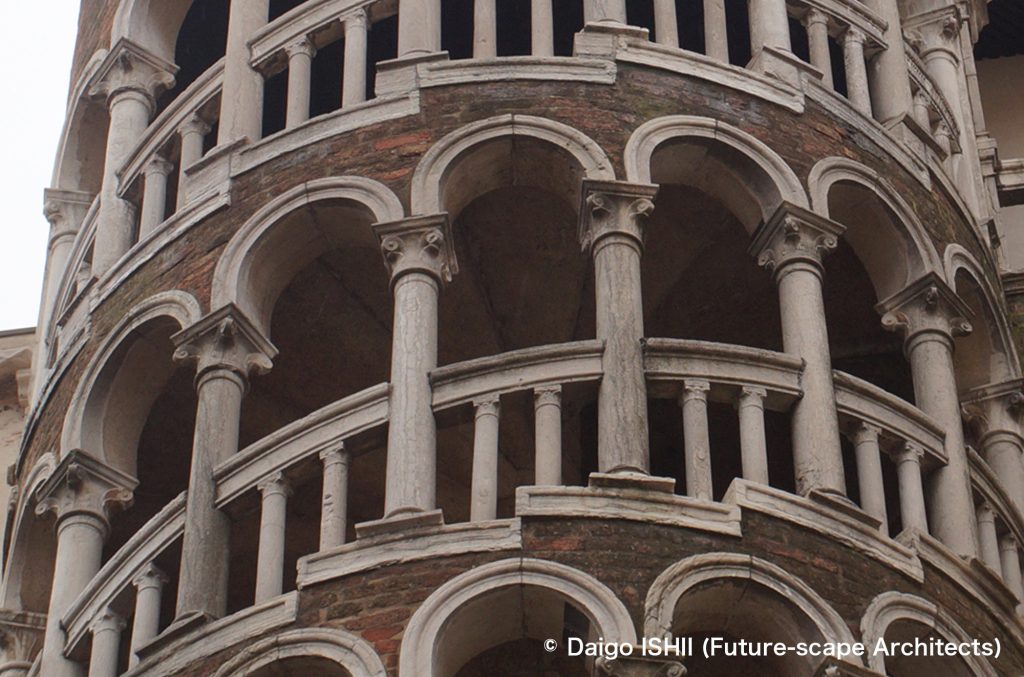
Detail of the skeleton made of a white limestone from Istria and bricks that fill in between the limestone.
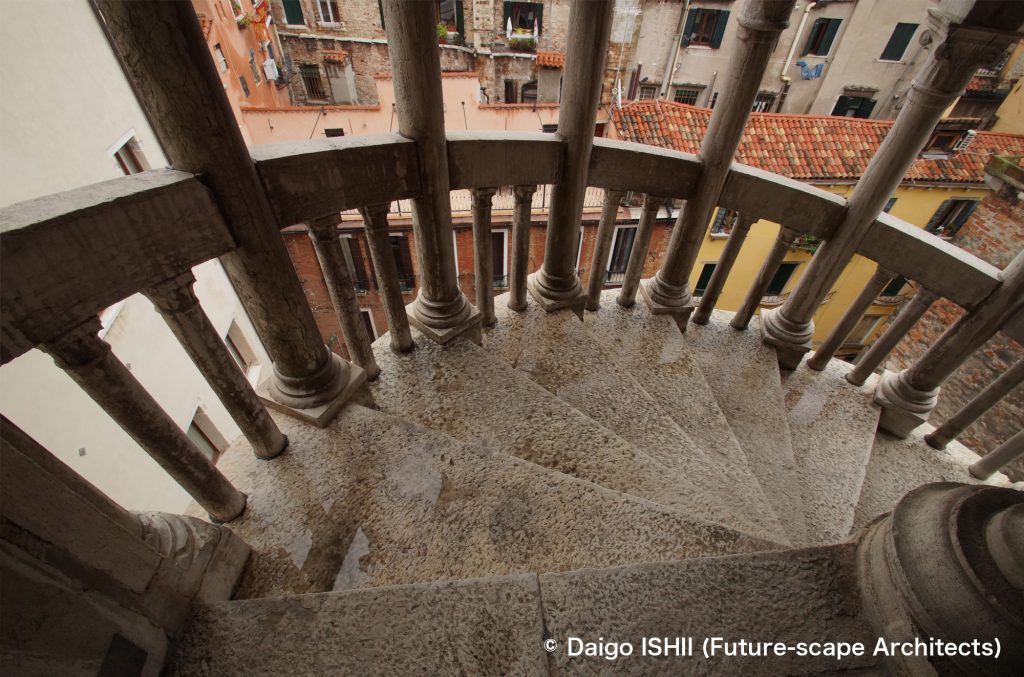
See the staircase and handrails made of a white limestone from Istria.

See the observatory on the upper floor with the view of the roof of Basilica di San Marco and the bell tower.
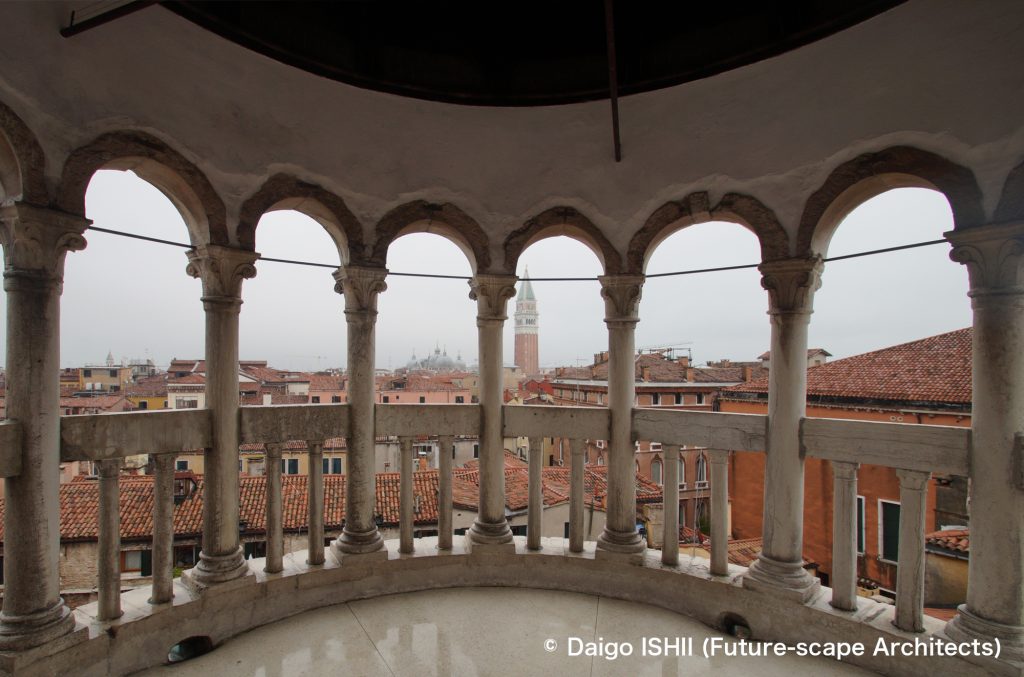
See the observatory under the dome on the upper floor with the view of the roof of Basilica di San Marco and the bell tower.
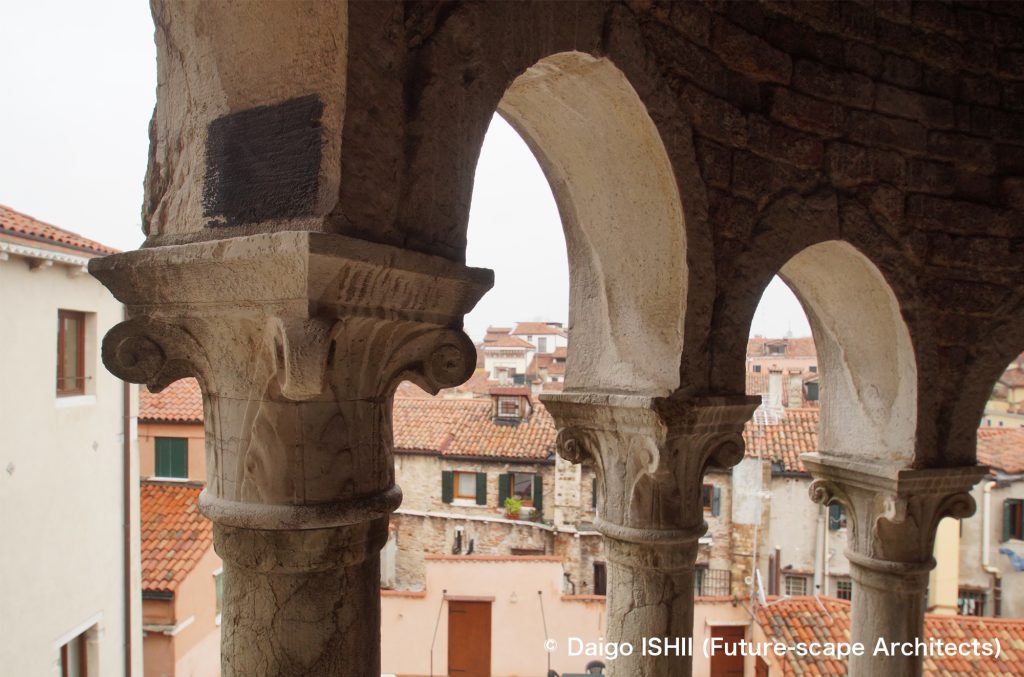
Detail of a pillar and the order of a capital made of a white limestone.
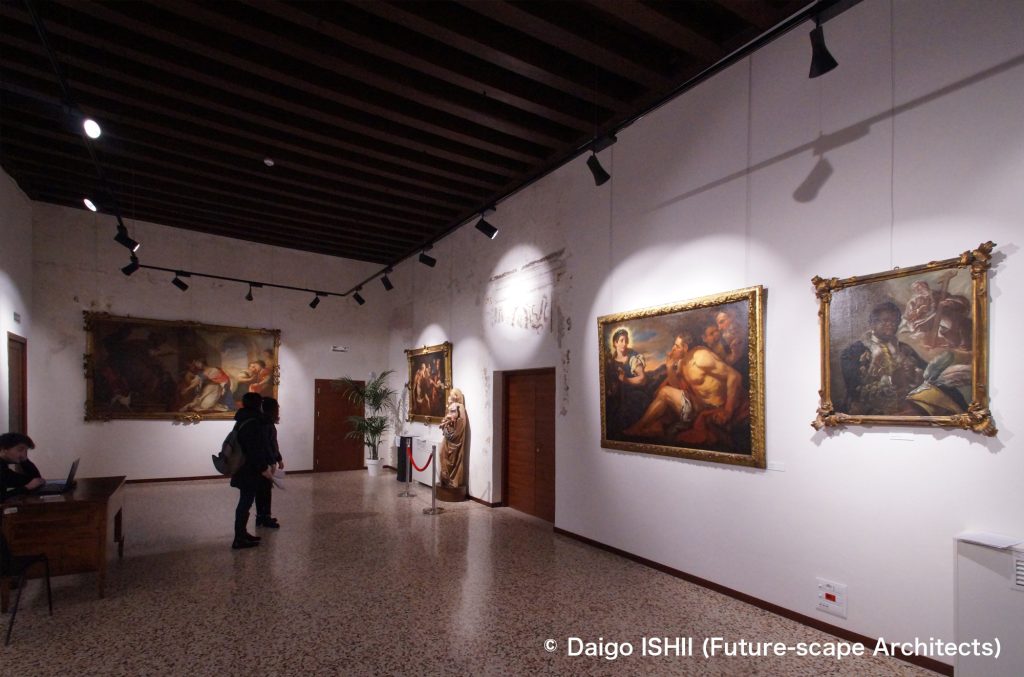
The 2nd floor of the Contarini del Borvolo Palace, which connected with the spiral staircase via loggia, is opened as the Sala del Tintoretto (Tintoretto room).
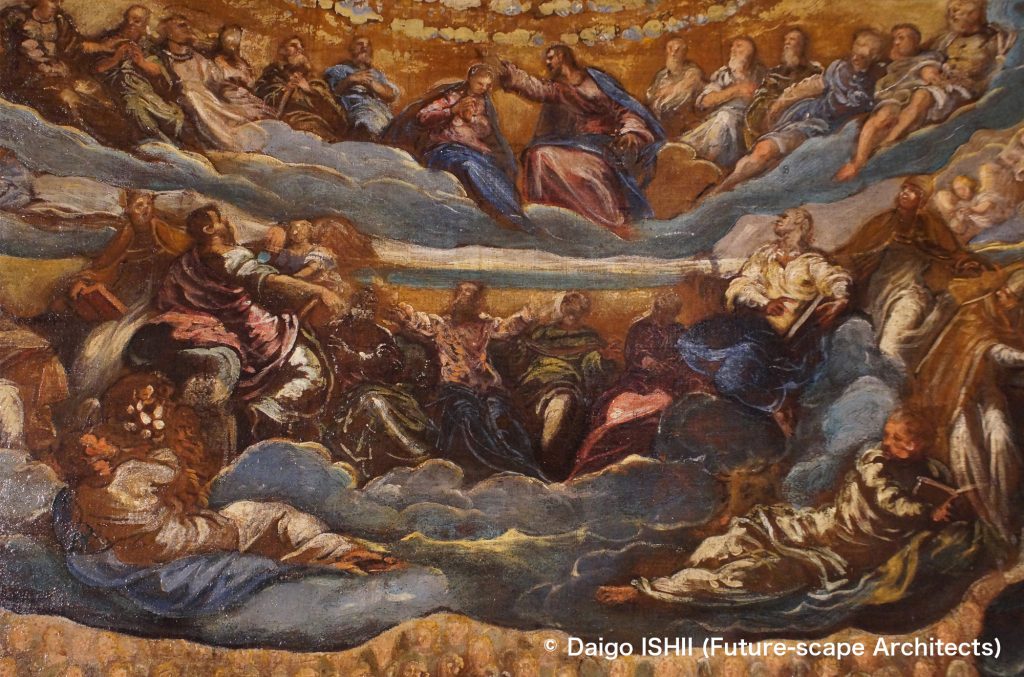
A study of the painting "Heaven" by Tintoretto, a painter representing the Venetian school of the Italian Renaissance., is exhibited in the Sala del Tintoretto (Tintoretto room). The completed work is displayed in the Doge's Palace in Piazza San Marco.
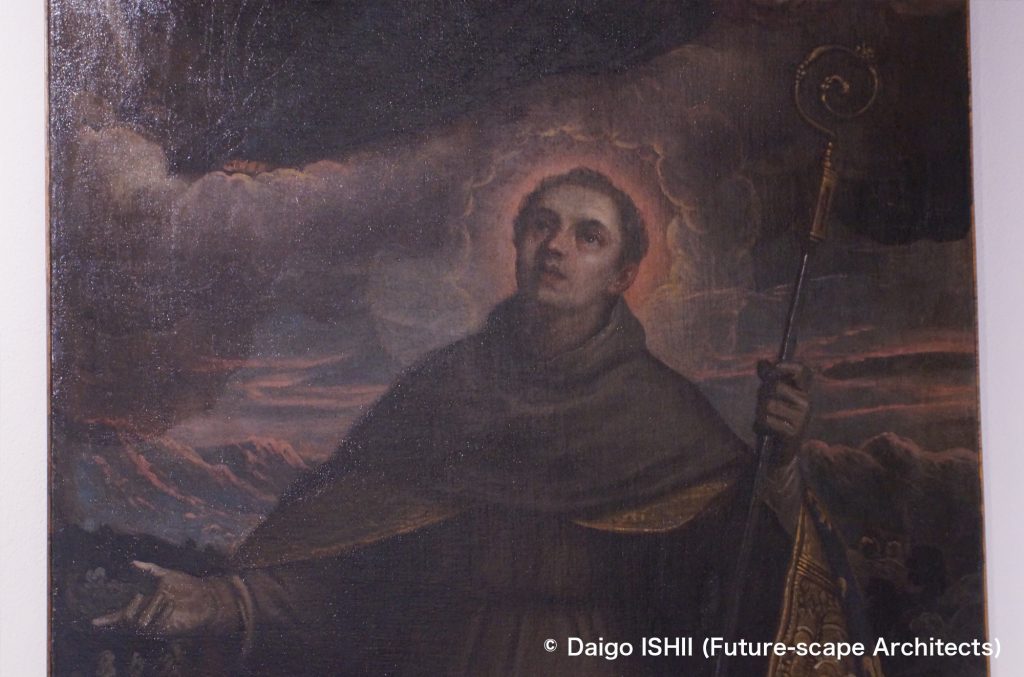
See "San Ludovico e San Marco" by Tintoretto in the Sala del Tintoretto (Tintoretto room).
ご感想はこちらへ / Click here for your impressions
もっと詳しく → 旅行の時間 - コンタリーニ・デル・ボーボロ階段(ヴェネツィア、ヴェネト、イタリア)
When you want to know more → Time of Travel -Scala Contarini del Bovolo (Bovolo Staircase) (Venezia, Veneto, Italy)
参考文献 / reference
The Art of the Italian Renaissance: Architecture Sculpture Painting Drawing (Rolf Toman, h.f.Ullman, 1995)
Art & Architecture Venice (Marion Kaminsky, h.f.Ullman, 2005)
ヴェネツィア (「旅する21世紀」ブック 望遠郷) (ガリマール社, 同朋社出版, 1994)
コンタリーニ・デル・ボーボロ階段解説板
Observatory for the Arts Venice
Arte Musica Venezia
写真の無断使用、転用はご遠慮下さい。/ Please do not use or upload our photos without permission.




